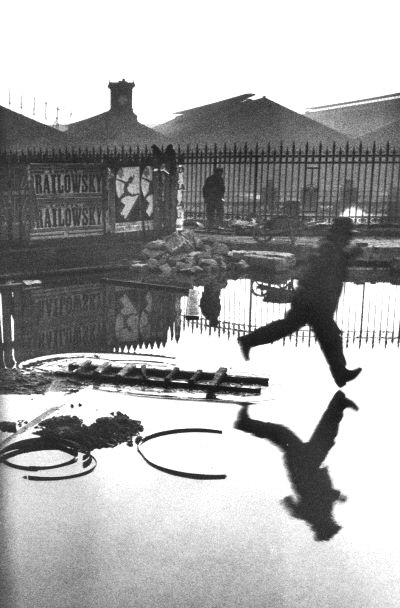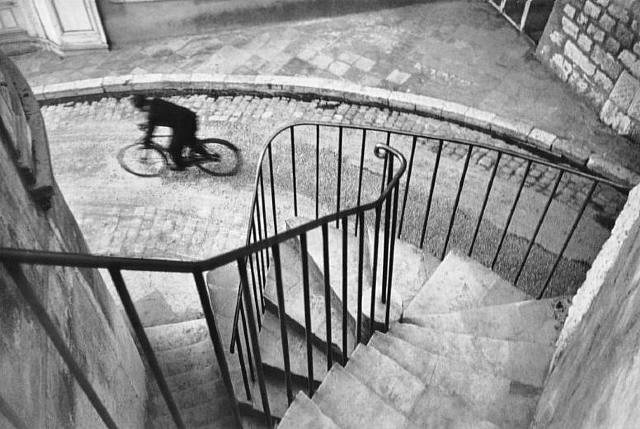This is the most popularly known photo created by Bresson. The way he created that tension between the front foot and the body of water by capturing that exact moment before it touches. The slight motion blur gives it a sense of action while the clarity of the rest of the image allows the eye to focus on the figure. I'm not 100% sure as to how he could have such an amazing composition in such short notice but my only guess would be that he found the spot and waited for a situation to occur.
Once again, Bresson has captured the perfect "Decisive Moment". The figure is perfectly framed between the wall, stairs and sidewalk. The blurred figure along with the clarity of the rest of the image creates the same effect as it did in the last. The viewer's eye is lead down to the figure with the winding lines of the stairs. I would assume that Bresson obtained this amazing composition through the same method I guessed for the previous image but I can not be certain.
This last image does not contain the same quality of "Decisive Moment" as the last two but still contains a very attractive quality. Your eye is drawn into the image through the spiraling effect, causing the photo to become three dimensional. The repetition of the faces adds an extra spiraling effect as well as stopping the image from becoming abstract. The hard vertical lines at the end of the spiral stops the eye and allows it to fall back down the spiral. This almost creates a hypnotizing effect.








